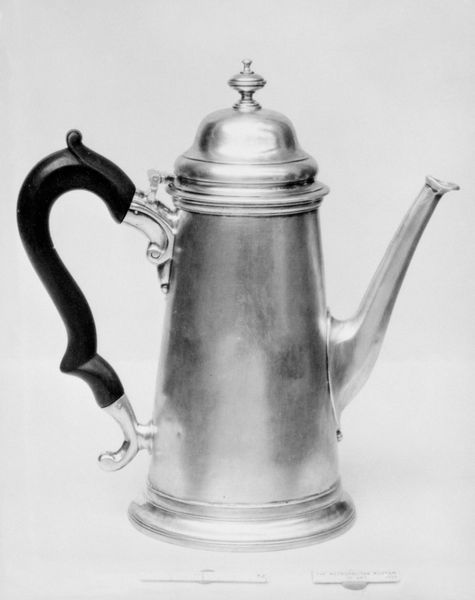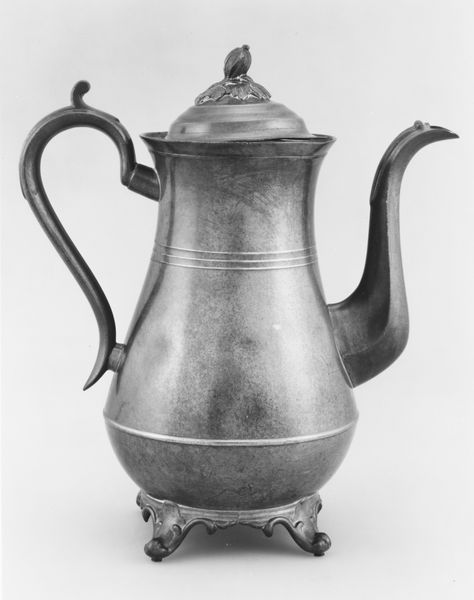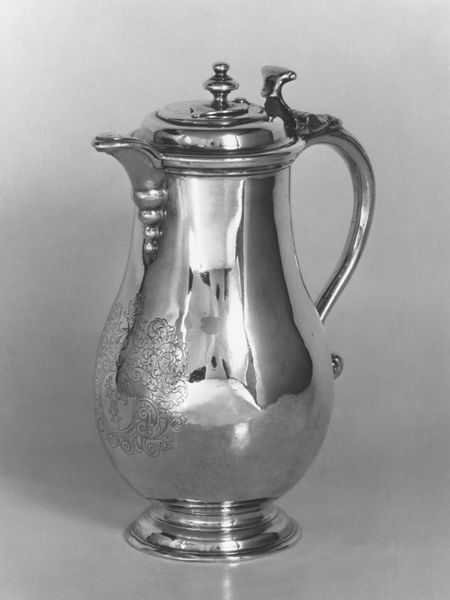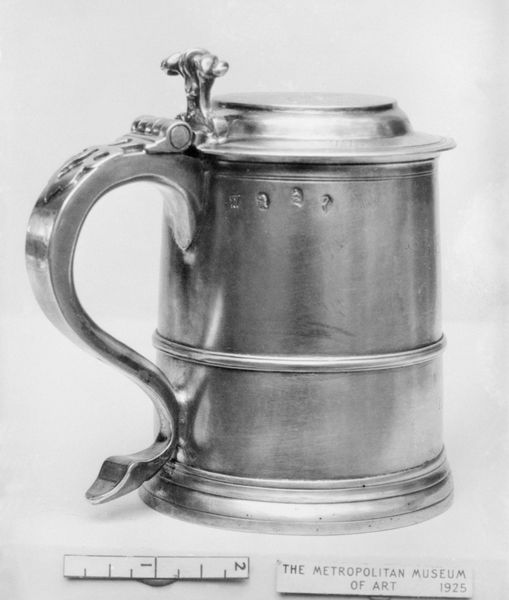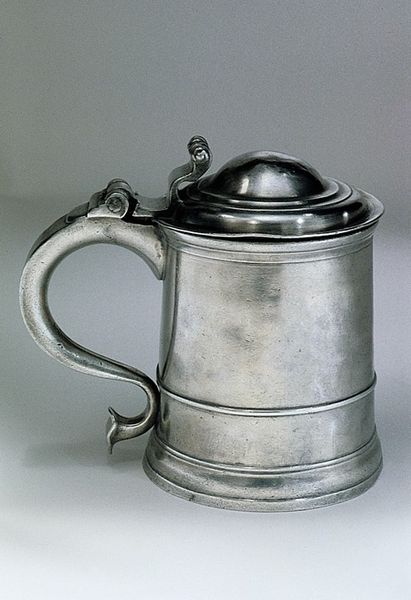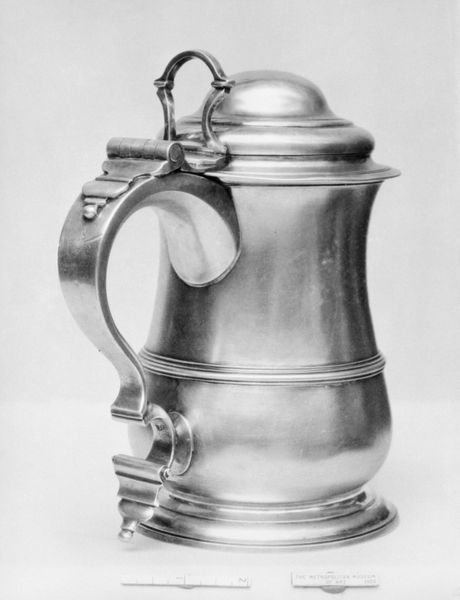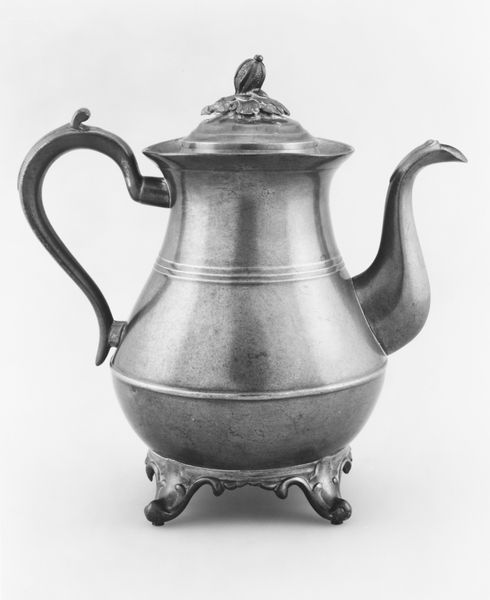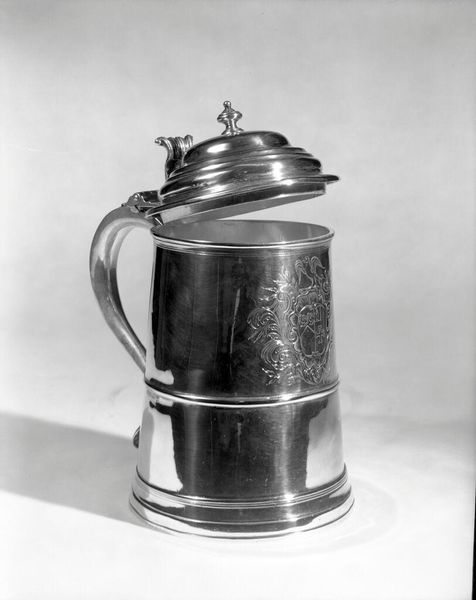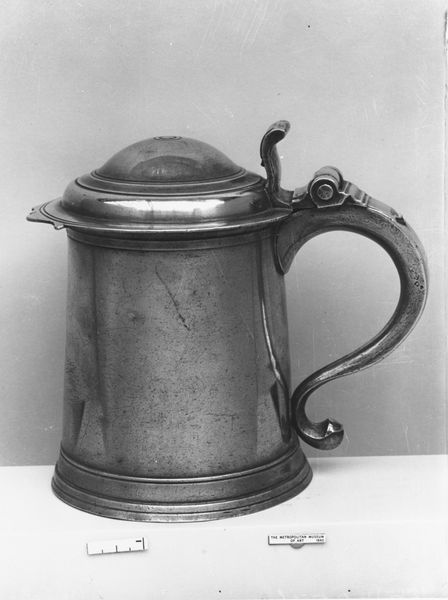
metal, sculpture
#
metal
#
sculpture
#
stoneware
#
sculpting
#
sculpture
Dimensions: H. 10 1/2 in. (26.7 cm)
Copyright: Public Domain
Editor: Here we have a "Teapot" made sometime between 1818 and 1828 by George Richardson. It's a metal sculpture, currently housed in the Metropolitan Museum of Art. It feels very stately and reserved. What sort of significance would an object like this hold for its original owner? Curator: Well, objects like these are seldom just decorative. They function as social signals. This teapot’s restrained design speaks of the Neoclassical period, which was all about order and reason after the Rococo's flamboyance. How does that emphasis on reason inform its aesthetic value in your opinion? Editor: It's as if every curve and line has been considered to avoid any sort of emotional outburst. The material also mutes any colour, and suggests refinement. Curator: Precisely! The muted metal reflects both wealth and control, wouldn’t you say? In this period, owning such an object suggested cultivated taste. Consider tea ceremonies, not just as beverage rituals but as staged performances of civility. What emotional value do you see embedded within that staging? Editor: It strikes me that such displays would emphasize self-control, both over oneself and one’s household. Perhaps a way to quell social anxieties through carefully scripted events? Curator: Exactly. It suggests societal hopes for harmony through etiquette. And how powerful objects are, reflecting personal ideals but equally expressing the societal values held most dear! Editor: I see now – it is less about a simple drink and more about constructing and maintaining a social order through the careful staging of a ritual. Thank you!
Comments
No comments
Be the first to comment and join the conversation on the ultimate creative platform.

